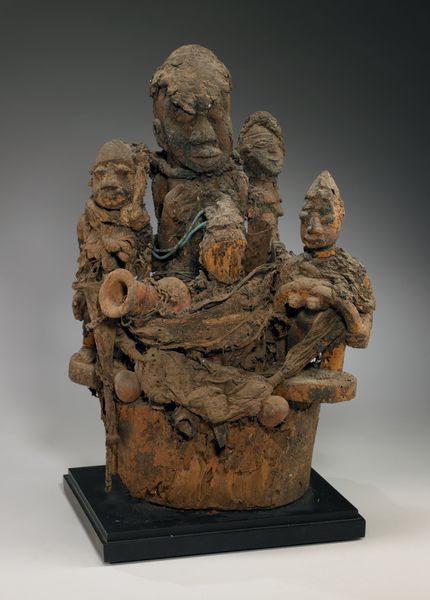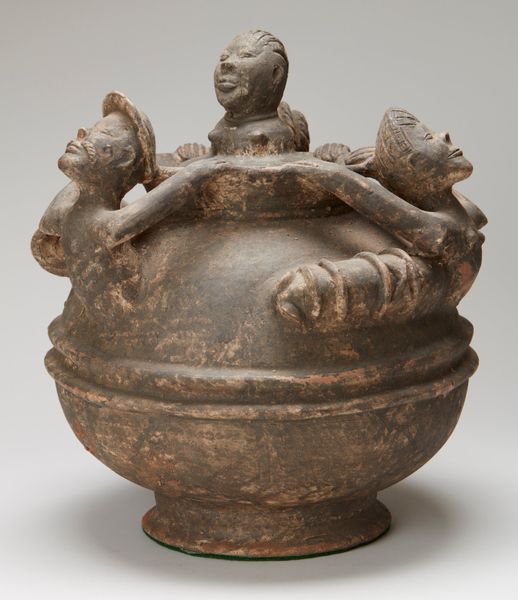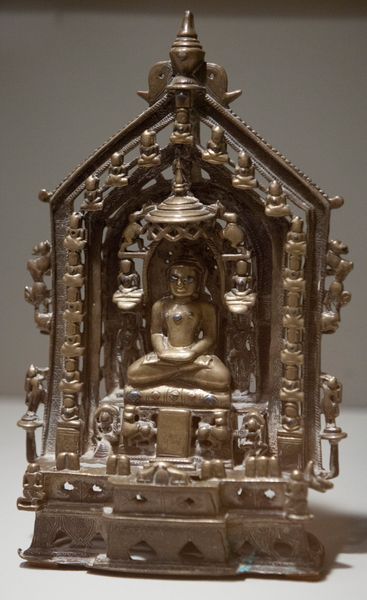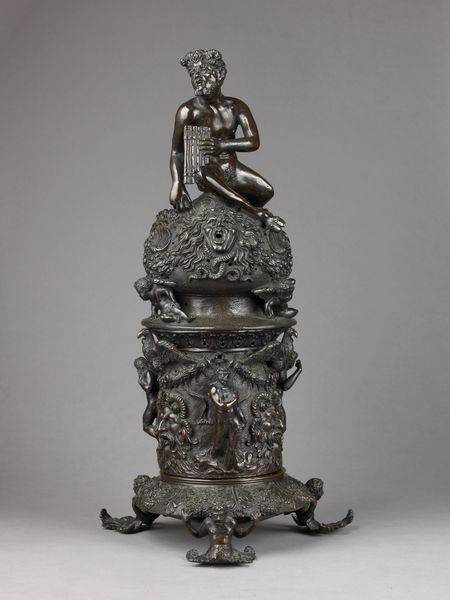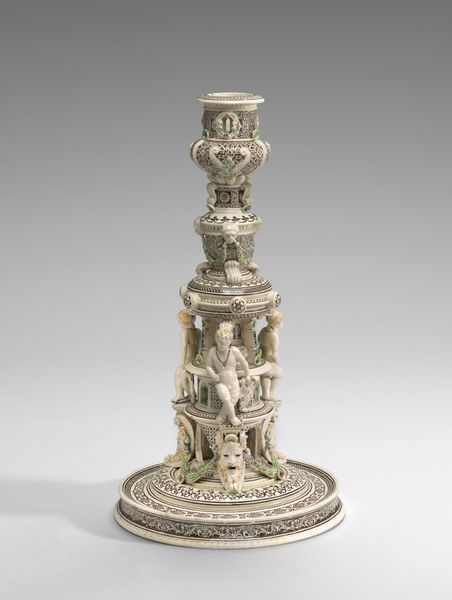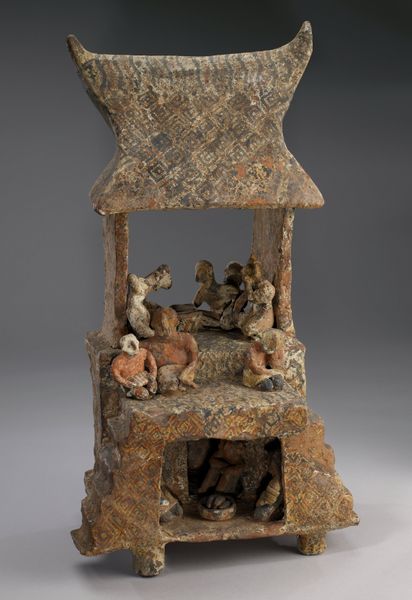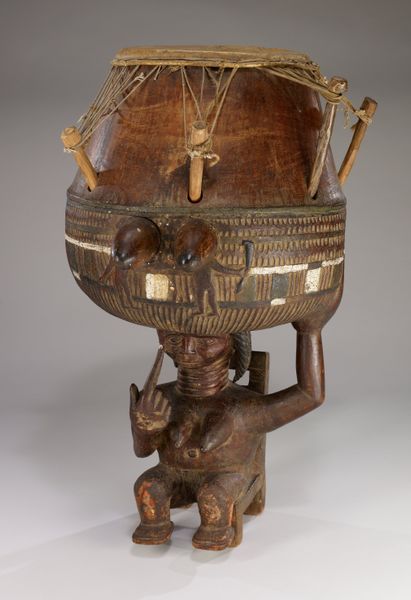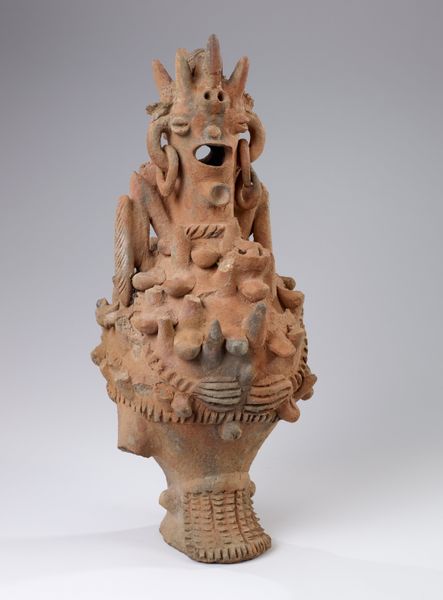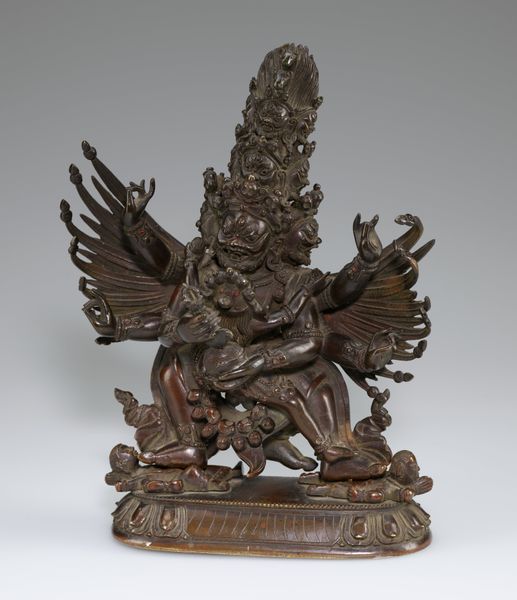
carving, relief, sculpture, wood
#
african-art
#
carving
#
relief
#
figuration
#
sculpture
#
group-portraits
#
wood
#
yoruba-art
Dimensions: 40 × 34.3 cm (15 3/4 × 13 1/2 in.)
Copyright: Public Domain
Curator: Here we have an Altar Stool, crafted by the Yoruba people, dating from the mid- to late 19th century. It's a wood carving, a relief sculpture featuring figuration and group portraits. Editor: It strikes me immediately with its somber tone and cylindrical structure, not unlike a miniature stage set. The turned wood is incredibly dense. Curator: Indeed. Consider how the composition directs our gaze— the upper register of the platform featuring a circular pattern leads to the carved figures surrounding its base. These support figures appear to represent a community, perhaps attending to a ritual or narrative scene displayed in the bottom. Editor: Absolutely, it is teeming with symbols of power and social roles. The central figure wears an elaborate headpiece and regalia, suggesting leadership, while the lower prostrate figure signifies perhaps sacrifice, tribute, or healing. The objects and postures tell us so much. Curator: I find the negative space crucial too; it defines the figures, emphasizing their relationship and delineating forms that enhance its structural integrity. The rhythm established through the repetition of carved shapes contributes to its presence. Editor: I see the rhythmic balance you note, but for me, its deeper story, these visible clues, is what calls. Look at the others bearing witness. They have these ceremonial roles as the narrative unfolds beneath them, this silent and powerful tableau. Curator: I concede to the layered meaning inherent, especially in this configuration and symbolic use of gesture. The craftsman employed formal means to communicate an even wider cultural narrative. Editor: Agreed, from the symbolism to its structural elements, this unassuming stool carries remarkable symbolic weight. Curator: It has shown us today how an analysis of form and semiotic readings coalesce to enrich our understanding of art. Editor: Illuminating a cultural memory, as art has always sought to do.
Comments
No comments
Be the first to comment and join the conversation on the ultimate creative platform.

